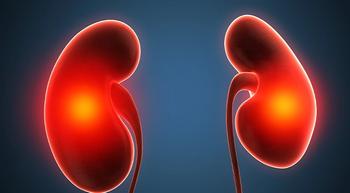
Chernobyl Disaster May Be Linked With Rare Cancer 30 Years Later
Health care practitioners were surprised when they saw 10 cases of a very rare cancer in the New York City area. As it turned out, most of the patients weren't originally from New York.
Vitreoretinal lymphoma is an extremely rare disease. So rare, in fact, that when 10 cases were found over a four-year span near New York City, physicians began to think that there must be some connection between the cases.
Sanford Kempin, M.D., assistant professor at Mount Sinai Health System, and his colleagues began to dig in a bit deeper with the help of Roxana Moslehi, Ph.D., associate professor in the University at Albany State University of New York, School of Public Health.
Sure enough, it was found that six of the 10 patients had a peculiar common denominator: they all lived near the Chernobyl nuclear power facility during the 1986 radioactive disaster.
The nuclear explosion contaminated large areas of Eastern Europe, and while it happened more than three decades ago, many people are still feeling the health implications of the event. The most common neoplasm reported in survivors is thyroid cancer, with other reported hematologic effects including blood count abnormalities and both adult and pediatric leukemias.
More recently, there has been an increased report of chronic lymphocytic leukemia (CLL) in this population, suggesting that this type of disease could have ties to radiation.
And now, vitreoretinal lymphoma may be added to that list.
“The findings that six of 10 vitreoretinal lymphoma patients had lived in areas proximal to Chernobyl at the time of the accident was a surprise,” Moslehi said in an interview with CURE. “Lymphomas were not among adverse health outcomes linked to the Chernobyl nuclear disaster, unlike thyroid cancer and leukemia.”
Vitreoretinal lymphoma is a rare presentation of primary central nervous system lymphoma (PCNSL). While the disease used to be considered a subcategory of intraocular lymphoma (IOL), it was since reclassified as a type of large B-cell lymphoma (DLBCL) that occurs in the patient’s eyes. Since the disease is so uncommon, it is rarely mentioned in scientific literature or epidemiologic reports.
“Our findings warrant further investigations of the role of radiation alone and/or in combination with genetic factors in the etiology of vitreoretinal lymphoma. Determination of the risk and causative factors for vitreoretinal lymphoma is instrumental in disease prevention,” Moslehi said.
While none of the 10 patients had a family history of lymphoma, it should be noted that seven of them were of Ashkenazi Jewish ancestry. Moslehi said that this could be caused by a couple of factors. First, there is a large population of Ashkenazi Jewish people in New York City. Or, it might also be possible that Ashkenazi Jews are more susceptible to the effects of radiation when it comes to cancer risk.
“The possibility of gene-environment interactions playing a role in lymphoma etiology cannot be ruled out,” Moslehi said.
Geographically, four of the patients were living in Ukraine at the time of the Chernobyl disaster; one was living in Poland; and one in Moldova. Median time from the accident to diagnosis was 26 years.
These findings do not definitely link radiation as the cause of vitreoretinal lymphoma, but they do open doors for more questions and further research, as well as the pressing need for comprehensive cancer databases for vitreoretinal lymphoma.
“Our study underscores the importance of setting up registries for this rare malignancy in order to accumulate enough patients to be able to look for patterns of exposure,” Moslehi said. “Such health registries would also facilitate conducting genetic and molecular studies in order to gain a comprehensive understanding of all factors (both genetic and environmental) involved.”




